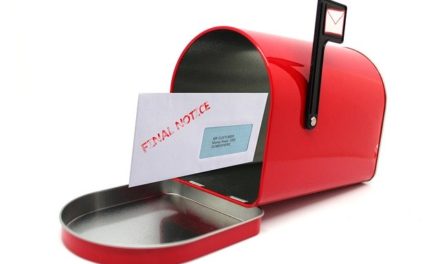A version of this article runs in this month’s Business Monthly serving Howard and Anne Arundel counties.
By Len Lazarick
Len@MarylandReporter.com
What to do about Baltimore’s high taxes?
It is an old question perplexing Maryland political leaders, but with new urgency. And there have been precious few new answers.
Fifty years ago, more than 900,000 people lived in Baltimore, a third of the population of Maryland. Over that half-century, that population has gone down by a third to 622,000, meaning almost as many people left Baltimore as live in all of Howard County today.
The people who remain are poorer and concentrated in those same areas as those shown in a redlining map from the 1930s. The head of the Baltimore Metropolitan Council showed that map to a Howard County Chamber of Commerce lunch at Baltimore’s Horseshoe Casino in July. The mortgage lending maps of the 1930s reinforced the racial segregation of Baltimore more than 80 years ago.
As Baltimore began to lose population in the 1960s, especially after the 1968 riots (which were much more widespread than the uprising this spring), one of the things city leaders did to maintain public services was to raise property taxes.
But as taxes went up, the population went down.
Double the rate
Now, Baltimore has a property tax rate of $2.248 per $100, more than twice as high as any in the state. That high rate is among one of the many factors holding the city’s population from growing again. By comparison, Baltimore County’s rate is half that at $1.10; Howard County’s is $1.014, and many other counties are under $1.00, including Anne Arundel, Montgomery and Prince George’s.
City officials know this, but have only been able to trim the rate by pennies. To make up for these exorbitant rates and attract new development to the city, they have granted big tax breaks to developers willing to build major new projects in the city, particularly the now bustling Harbor East area.
These tax breaks have created a major divide in the city, with new developments paying lower property taxes and older areas paying the same high rates. What to do about them was the subject of debate last month sponsored by the Maryland Public Policy Institute, a free market-oriented think tank.
Cutting the tax rate
The debate was not about whether to cut Baltimore’s property tax rate, but how much to cut it and how soon.
“Any cut is better than none; a bigger cut is better than a small cut,” said Louis Miserendino, a visiting fellow at the institute and director of the McMullen Scholars Program at Calvert Hall College High School.
He said Baltimore should follow the examples of San Francisco and Boston, which drastically cut their taxes to spur a revival in city living.
“Baltimore taxes are way too high,” agreed Matt Gallagher, head of the Goldseker Foundation and former chief of staff to Gov. Martin O’Malley.
Gallagher also headed Mayor O’Malley’s CitiStat program, and he brought a note of political and governing reality to the discussion at the University of Baltimore’s new Angelos Law School building.
Miserendino suggested that there should be a statewide cap on property taxes at 1.5%, a move which would only affect Baltimore property taxpayers. This would attract more people to live in the city and contribute to the state’s smart growth policies encouraging new development where infrastructure already exists. State taxpayers would then make up the difference in Baltimore’s lost revenues, much as California did for San Francisco in the 1970s, Miserendino said.
Wishful thinking
However, Gallagher said, “It’s wishful thinking that the state would fund this.
“We would have done it if we thought it could be done,” said Gallagher.
Gallagher’s solution is small cuts in the city property tax every single year on a predictable basis so that someone buying a home would know that their tax rate would gradually be going down. He also suggested renegotiating the deals the city has with the owners of one-third of city property that is not taxed at all, because it is owned by nonprofit institutions, in particular The Johns Hopkins University and Medical Institutions, and the University of Maryland. They already make some payments in lieu of taxes to the city.
Gallagher also pointed to major differences between Baltimore’s situation and that of San Francisco and Boston, particularly Baltimore’s “high concentrations of poor people” and the amount of money it spends on police: $450 million a year. (Baltimore has more police officers per citizen (46.3 per 10,000) than all but one major U.S. city, Newark, N.J.)
Jody Landers, a former City Council member who ran for mayor, suggested that Baltimore adopt the tiered property tax rates of the District of Columbia, which charges a much higher property tax rate for commercial real estate than it does for owner-occupied residential property. Washington, which had had a lower population than Baltimore for the last 60 years, now has 46,000 more people.
What it gets
Gallagher did not lay out the reasons that that the state would not help lower Baltimore’s tax rate, but most state legislators are well aware that Baltimore gets more state aid per capita than any other jurisdiction, at $1,953 — compared to a statewide average of $1,189. Most suburban counties get far less money back than their taxpayers pay the state.
In addition, the state spends $193 million to run the Baltimore City jail, central booking and its community college, which are functions other jurisdictions pay for themselves.
Hogan’s plans
Last month, Gov. Larry Hogan announced in a Baltimore Sun op-ed piece that his administration would be announcing “a series of innovative ideas that have the potential to deliver real change” for Baltimore.
These included “a plan to knock down blocks of derelict buildings that tarnish communities across Baltimore, replacing them with parks and other open spaces.” There already is such a program in Baltimore that O’Malley helped finance, but presumably Hogan is proposing to do it on a larger scale. Sun columnist Dan Rodricks responded, “send money, not a bulldozer,” which Republicans called a typical liberal reaction.
Hogan also promised a sustainable jobs program, and an alternative to the Red Line light rail project he rejected in June.
“My Transportation secretary, Pete Rahn, will unveil a new approach to transit that includes ideas to better move people around Baltimore, including dedicated corridors to rapidly move people East-West and North-South,” Hogan said.
Finally on education, Hogan promised, “My administration will vigorously pursue and support approaches to education that reject the status quo in order to make a real difference for students.”
The state already sends $913 million to Baltimore for its public schools, $11,310 per pupil, thousands more per student than all but the state’s smallest, poorest counties get. The city itself contributes a lower percentage of the school budget than any other jurisdiction.
For the moment, these are just generalities from Hogan. Since he continues to promise to cut taxes and spending, the city cannot expect a massive infusion of funds.






I am running for mayor and love your input in the comments. I will have many options to consider in lowering taxes, which is a must for our city!
1. Absolutely Correct Dale: “It also needs to get crime under control, 250+ homicides plus assaults, robberies, and the “fun” that happens every night after nightfall…”
2. Then new non-corrupt mayor and city council Leadership, no more quick fixes e.g. casino gambling, grand Prix racing or lotteries !
3. Then new businesses might come to Baltimore City and bring new jobs!.
4. Then new or refurbished homes would be needed !
5. The tax base might just increase over time!
6. Then kick the troublemakers out of schools at 16 (Gov, O’Malley’s raised the stay in school age to age to 18)
The city needs to spend less… Period paragraph… Why should anyone who is sane want to pay double the property tax to live there?
It also needs to get crime under control, 250+ homicides plus assaults, robberies, and the “fun” that happens every night after nightfall…
The city owns a very large portion of the derelict homes and buildings… Why didn’t they tear them down and use eminent domain ( I am not a fan ) to tear down the ones owned by individuals ?
As for green spaces and parks… Who will maintain them ? And how long will it be before they attract crime ?
The school system has received a $ 1 BILLION in school funds and what are the results ?
The city is also corrupt at every level, I wonder who is siphoning off funds meant to improve the city ?
As for me, I’ve always found cities ugly and unattractive… Concrete, asphalt, reeking alleyways, crime, grime, poorly maintained streets, etc. I prefer my quiet green county neighborhood…